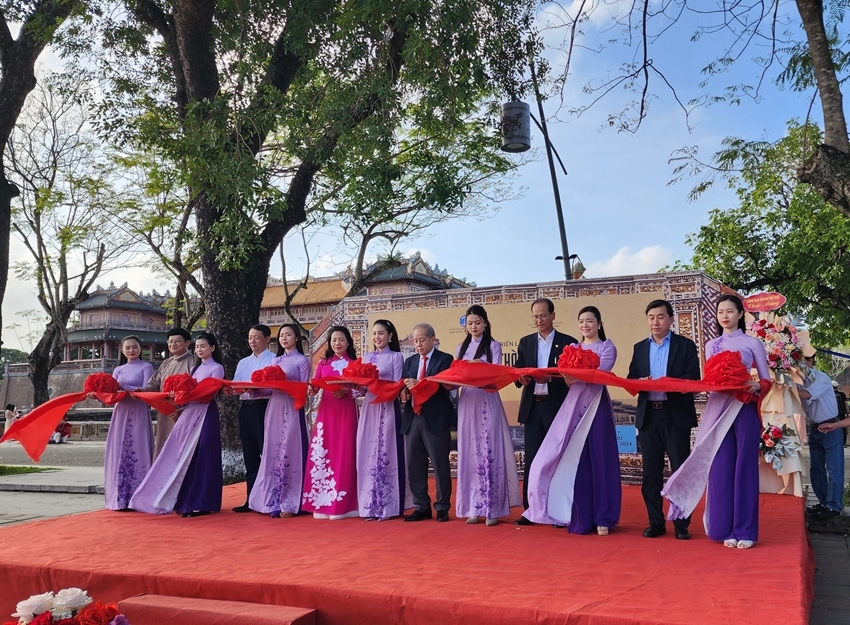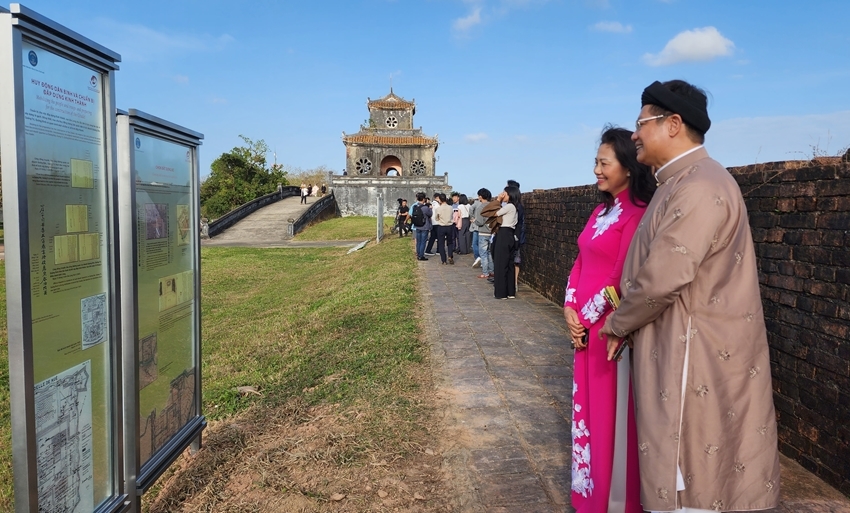The event was attended by Permanent Deputy Secretary of the Provincial Party Committee Phan Ngoc Tho, leaders of various departments and sectors, along with a large number of tourists visiting the historical site of Hue.
 |
| Ribbon-cutting ceremony to inaugurate the exhibition “Hue Imperial City – Remaining traces of the past” |
For the first time, over 100 significant documents and images, including many records of Royal and edicts of the Nguyen emperors, as well as the imprints and stories of building Hue Imperial City, were unveiled. Particularly, these documents, records, and images were authentically and vividly reproduced through the exhibition in the Ky Dai area, and Upper Surface of the Citadel rampart, Hue Imperial City, allowing visitors to learn more about the historical stories, cultural values, and treasured information about an ancient feature of the ancient capital.
Over the past 700 years, Thuan Hoa - Phu Xuan - Hue has become one merging into the historical flow of the nation. Hue - the “fragrant land” - originally a gift from a betrothal ceremony, gradually became the capital of the Nguyen lords, the capital of the Tay Son dynasty, and later the capital of the Nguyen dynasty. 220 years ago, Emperor Gia Long expanded the capital and built Hue Imperial City. The construction of Hue Imperial City took nearly 30 years (from 1805 to 1832) under the reigns of Emperors Gia Long and Minh Mang.
 |
| The exhibition is regularly held in an outdoor space, spanning from The Nhon gate (Ngan gate) to Ky Dai to Quang Duc gate. |
In modern Vietnamese history, Hue Imperial City stands as the most grandeur and monumental structure. It bears witness to the golden era of the Nguyen dynasty, as well as the triumphs and defeats of this last feudal dynasty. In 1945, after the abdication of Emperor Bao Dai, Vietnamese history entered a new chapter, and Hue Imperial City concluded its role as a capital. Despite the historical ups and downs and the changing times, Hue Imperial City suffered damage and deterioration, leaving only traces of some works. In 1993, Hue Imperial City, a part of the Complex of Hue Monuments, was recognized by UNESCO as a World Cultural Heritage.
More than 100 records of Royal dossiers, documents and images about Hue Imperial City will take visitors on a journey to discover the “traces of ancient Hue.” Hopefully, this exhibition would contribute to brushing away the dust of time, allowing us to learn more about the ancient imprints on the land of Hue Ancient Capital. With two sections: Thuan Hoa - Phu Xuan - Hue in the flow of history and Hue Imperial City - traces of a dynasty; the exhibition is regularly held in an outdoor space, spanning from The Nhon gate (Ngan gate) to Ky Dai to Quang Duc gate.